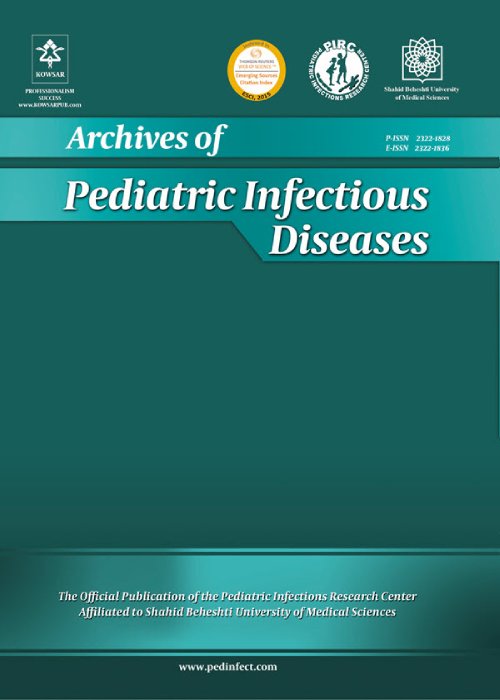Diabetic Foot Infections: Antibiotic Susceptibility Patterns and Determination of Antibiotic Cross-Resistance in Clinical Isolates of Enterococcus Species During 2012 - 2014 in Shiraz, Iran
Author(s):
Abstract:
Background
Diabetic foot infections (DFIs) are an increasingly common public health problem and are associated with mortality and morbidity. The incidence of Enterococci in DFIs, a leading cause of hospital admission in Iran, has been increasing, possibly due to previous antibiotic use.Objectives
The aims of this study were 1) isolation of bacteria from diabetic patients with foot ulceration, 2) characterization of the isolated bacteria, 3) confirmation of Enterococci and their genus, 4) determination of the susceptibility profile of the isolates, and 5) survey of the cross-resistance among Enterococcus spp.Methods
A total of 86 diabetic patients with foot ulceration were investigated during 2012 - 2014 in Nemazee hospital (Shiraz, Iran). Swabs were collected from diabetic ulcers. For the isolation of bacteria, microbiological media were used. Colonies were further characterized using various biochemical tests (e.g., catalase test, oxidase reaction, growth on bile esculine [BE] agar, growth in the presence of 6.5% NaCl, growth at 45°C, motility, pyrrolidonyl arylamidase [PYR], yellow pigment, arginine dihydrolase [ADH], and sugars fermentation). Antibiotic susceptibility testing was done by standard disc diffusion method, according to the CLSI protocols. Detection of vancomycin-resistant Enterococcus (VRE) was performed by BHI agar screen plate.Results
In the current study, a total of 86 diabetic patients were investigated. Enterococcus spp. were isolated from 34 (39.5%) patients consisting of 20 males (59%) and 14 females (41%). Twenty-five (73.5%) patients received antibiotic treatment on admission. Fifty (44.1%) cases had random blood sugar ranging between 130 - 300, and 19 (55.9%) had blood sugar of 300 - 450. Of the 34 patients, 15 (44.1%) had type 1 diabetes and 19 (55.9%) had type 2 diabetes. Enterococcus faecalis was the most common isolated Enterococcus spp. (50%). Linezolid was the most effective antibiotic against Enterococcus isolates, and ciprofloxacin was the least effective.Conclusions
Our data showed that resistance to vancomycin among Enterococcus spp. isolates is emerging. Knowledge of the causative microorganisms in DFIs and their antibiotic susceptibility profiles is essential for proper treatment and infection eradication.Keywords:
Language:
English
Published:
Archives of Pediatric Infectious Diseases, Volume:5 Issue: 2, 2017 Apr
Page:
7
magiran.com/p1666843
دانلود و مطالعه متن این مقاله با یکی از روشهای زیر امکان پذیر است:
اشتراک شخصی
با عضویت و پرداخت آنلاین حق اشتراک یکساله به مبلغ 1,390,000ريال میتوانید 70 عنوان مطلب دانلود کنید!
اشتراک سازمانی
به کتابخانه دانشگاه یا محل کار خود پیشنهاد کنید تا اشتراک سازمانی این پایگاه را برای دسترسی نامحدود همه کاربران به متن مطالب تهیه نمایند!
توجه!
- حق عضویت دریافتی صرف حمایت از نشریات عضو و نگهداری، تکمیل و توسعه مگیران میشود.
- پرداخت حق اشتراک و دانلود مقالات اجازه بازنشر آن در سایر رسانههای چاپی و دیجیتال را به کاربر نمیدهد.
دسترسی سراسری کاربران دانشگاه پیام نور!
اعضای هیئت علمی و دانشجویان دانشگاه پیام نور در سراسر کشور، در صورت ثبت نام با ایمیل دانشگاهی، تا پایان فروردین ماه 1403 به مقالات سایت دسترسی خواهند داشت!
In order to view content subscription is required
Personal subscription
Subscribe magiran.com for 70 € euros via PayPal and download 70 articles during a year.
Organization subscription
Please contact us to subscribe your university or library for unlimited access!


